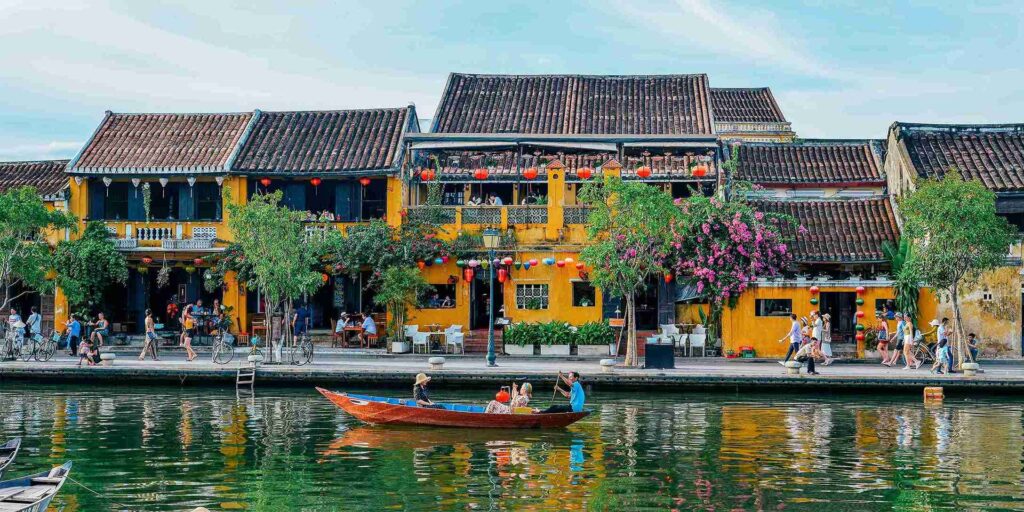Hoi An, Vietnam – Travel Tips
Category
Categories
Popular Articles

## Overview of the Destination:
Hoi An is one of the most enchanting destinations in Vietnam. Known for its beautifully preserved Ancient Town, Hoi An is a blend of indigenous and foreign cultures, resulting in a unique heritage site that captures the heart of every visitor. Recognized by UNESCO as a World Heritage Site, the town is famous for its charming lantern-lit streets, ancient Buddhist temples, vibrant markets, traditional tailors, and quaint riverside settings. The tranquil beaches of Cua Dai and An Bang are also a short cycle away, making Hoi An a place worth visiting for its historical interest, cultural immersion, beachlife, and culinary delights.
## Best Time to Visit:
The best time to visit Hoi An is between February and April, during this time the weather is pleasant with less rainfall. But if you are interested in participating in the local cultural events, try to plan your visit around the full moon when the Monthly Lantern Festival is held, turning the town into a glowing spectacle of colorful lanterns bobbing along the river.
## Climate & What to Pack:
Hoi An has a tropical climate. Summers are hot and humid, while winters are mild and pleasant. Be sure to pack breathable clothing, sunscreen, a hat for sun protection, and a reusable water bottle to stay hydrated. Carry a light rain jacket or umbrella, as sudden rain showers are common, particularly from June to August.
## Getting There:
The nearest major airport to Hoi An is Da Nang International Airport. From there, Hoi An is just about a 45-minute taxi ride away. Most nationalities require a visa to enter Vietnam, so ensure you have arranged this beforehand.
## Getting Around Locally:
Hoi An is a compact town, making it perfect for exploring on foot or by bicycle. Many hotels offer free bicycles to their guests. For longer distances, taxis or Grab (similar to Uber) are readily available. Just note that cars are not allowed in the Ancient Town area during certain hours, to preserve its tranquility.
## Safety Tips:
Hoi An is a relatively safe place, but it’s wise to take standard precautions. Beware of pickpockets in crowded places like the markets and always count your change, as some vendors may overcharge tourists. When exploring on foot or bike, be mindful of the Asian-style traffic.
## Top Things to Do & See:
Must-see sites include the Japanese Covered Bridge, the 200-year old Tan Ky House, and the Fujian Assembly Hall. Embark on a street food tour to sample local delicacies or try a cooking class. For a more immersive experience, take a countryside bike tour, go for basket boat rowing, or partake in a lantern-making workshop.
## Where to Stay:
Luxury accommodations include Four Seasons Resort The Nam Hai and Anantara Hoi An Resort. Mid-range places such as Hoi An Historic Hotel or Hoi An Riverside Resort and Spa offer excellent facilities. Budget travelers can opt for homestays like Villa Riverview or Hoianation Villas.
## Food & Local Cuisine:
Hoi An is well-known for its street food. Must-try local dishes include Cao Lau, White Rose Dumplings, and Banh Mi. Many restaurants and stalls in the Ancient Town or at the Central Market serve these at reasonable prices.
## Cultural & Practical Tips:
The Vietnamese Dong is the local currency and while English is widely understood, learning a few local phrases could be useful. Vietnam uses Type A, C, and F plugs, and the standard voltage is 220V. Wi-Fi is generally available in most hotels, cafes, and restaurants.
## Sustainable or Responsible Travel Tips:
Respect the local culture and religious practices, particularly when visiting temples or other religious sites. Use a reusable water bottle and avoid using single-use plastics to help keep the environment clean.
## Personal Travel Tip:
Hoi An’s charm lies in its slow pace. So, take a leisurely bike ride, soak up the history, eat to your heart’s content, and enjoy the simple pleasures of this little gem in Vietnam. The more unhurried your exploration, the more Hoi An will reveal to you.










